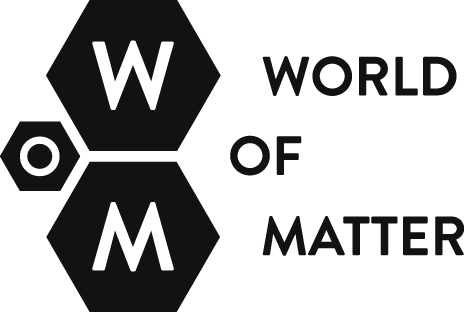While the many different files of World of Matter cover fairly distant sites and quite specific local constellations, one characteristic they tend to share is that of a conflictive confrontation between on-site conditions and trans-local dealings - a conflict that not only stems from antagonistic self-interests, but is underpinned by wider philosophical concerns about how we can make sense of our collective being in the world. This urge to find a different theoretical framework more apt for the complex interplay of human and non-human forces has surfaced in parallel to a growing recognition that the current crisis cannot be overcome by purely readjusting the settings of old-school economic operations. It is here that we find the call for a new ecological understanding coalescing with the call for a new political economy. …
Co-operative of Things
Artist/Author: Helge Mooshammer
At the heart of these contentions lies the demand to break with capitalism’s tendency to externalisation. Affected parties are pressing increasingly hard for current resource exploitation to take into account all the things and costs that the market economy has so far succeeded in excluding from its cost and profit calculations. An important strand of research into the possibilities of a more inclusive understanding and use of resource environments has been the recent focus on co-operative structures. Elinor Ostrom’s 2009 Nobel Prize in Economics for her research on economic governance1 and the United Nations declaration of 2012 as International Year of Co-operatives, among other things, have drawn attention to the capacity of co-operatives to stake out a middle ground between the extremes of over-regulation through centralised authorities and total liberalisation of a privatised market.
Within this ideological struggle around the limitations of man’s dominion over the world a new stream of thinking has been gaining increasing popularity: the discourse on the social life of things. Promoted by radical thinkers from liberal institutions and philosophical circles exploring the idea of speculative realism, it has the air of a radically new vision in which thingness might become a promising object of critical enquiry. Indeed, it would seem vital to recognise that the conceptualisation of natural resources as commodities is only one of many options in the life cycle of objects that, over time, appear in different constellations and are thus put to use in different ways and in line with different value regimes.
While the patterns of argumentation and rhetorics deployed by speculative realism seem to promise scope for transgressing the limitations of human-centered interactions with the material world (and resource exploitation is a key example of such interaction), we also have to be careful not to throw out the baby with the bath water. It is, of course, significant that the rise of this new doctrine coincides with the recent cycle of crises in the market economy exemplified by the 2008 credit crunch that saw Western hegemony run out of answers to the global challenges of prosperity, equity and resource distribution. Could it be that this recurring focus on the independence of the life of things merely serves as means of obviating human responsibility for what is happening to the world we live in? Moreover, the vehemence that this new narrative has taken on in the art world raises the question of whether the new aestheticisation of objects and their material qualities might actually conceal a certain fetishisation of tradable objects, precisely in times of volatility. Is this rehabilitation of the thing allowing a purified market of exchange back in through the back door, as it were, one that is again managing to exclude all potential externalities from its calculations? Are we witnessing the building of an unholy alliance between the connoisseur art critic and the stock exchange broker who prefer to operate on the speculative market of measurable material quantities rather than having to deal with the messiness of relationalities between humans, things and their interactions?
In discussing the creation of the urban commons, David Harvey, the seminal voice of counter-geography, is certainly very clear about the commons being not a thing but an issue of social practice,2 which in turn allows for many things to be conceived in a multitude of ways. The challenge for World of Matter can be seen as founded on the endeavour not to discriminate between, on the one hand, the ecologies of things and their lives and, on the other, the manifold human relations that develop around them. The point here is to expand the imaginary of possibilities. Perhaps it is time to start thinking about a co-operative of things.
1 Elinor Ostrom (1990) Governing the Commons: The Evolution of Institutions for Collective Action. Cambridge: Cambridge University Press.
2 David Harvey (2012) Rebel Cities: From the Right to the City to the Urban Revolution. London and New York: Verso.


